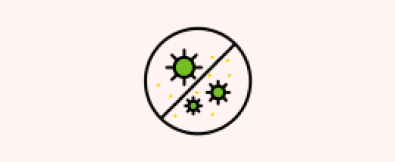



Top 3 Diaper Features
These diaper features make diapering a breeze by saving you time, preventing messes and leaks and keeping baby comfy and dry. Diaper features aren't just 'nice to have.' They're helpful tools for your parenting journey.

Why do some diapers have pocketed waistband?
Diapers with pocketed waistband
Consider diapers with pocketed waistbands your secret weapon against blowouts. When your little one delivers a legendary diaper blowout, that nifty pocket helps trap it all in.
Consider diapers with pocketed waistbands your secret weapon against blowouts. When your little one delivers a legendary diaper blowout, that nifty pocket helps trap it all in.

How does the wetness indicator work?
Diapers with wetness indicator
Babies have their own secret language of cries, but decoding it can be like solving a riddle. That's where a wetness indicator saves the day! When moisture from pee is present, it changes color from yellow to blue. So, you'll know right away when it's time to dive into diaper duty.
Babies have their own secret language of cries, but decoding it can be like solving a riddle. That's where a wetness indicator saves the day! When moisture from pee is present, it changes color from yellow to blue. So, you'll know right away when it's time to dive into diaper duty.

Are hypoallergenic diapers less likely to cause skin irritation?
Hypoallergenic diapers
Yes, hypoallergenic diapers are less likely to cause skin irritation! Because they’re free of nasty irritants like fragrance, parabens and elemental chlorine, they're super gentle and less likely to irritate delicate baby skin.
Yes, hypoallergenic diapers are less likely to cause skin irritation! Because they’re free of nasty irritants like fragrance, parabens and elemental chlorine, they're super gentle and less likely to irritate delicate baby skin.
Diaper Calculator
Need to find out your baby's diaper size, how many diapers they'll use per day, or for how long they'll be in each size?
Learn More 




















